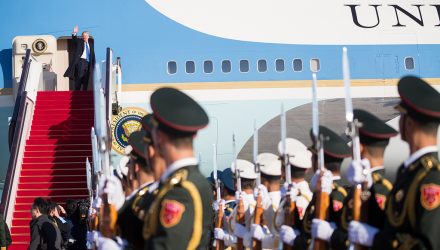The tariffs themselves do make sense. The move is retaliation to decades of unfair trade practices by the Chinese government. While tariffs may be a fairly weak economic tool and may generate collateral damage, they are a necessary first step in trying to level the playing field and to win the long-term battle for economic dominance. But while Made in China 2025 is the target, in this case, tariffs are bound to miss the mark. That is surely bad news for some—soybean farmers, steel and aluminum manufacturers, and anyone in the market for a new washing machine. But for companies in the US and abroad that are delivering today’s most innovative products and technologies in robotics, automation, and AI, the trade war is bound to be nothing more than a blip the size of a robot’s microchip, at least in the short-term. Here’s why:
- China isn’t a big enough player in robotics supply chain—yet.
Yes, Made in China 2025 is a huge initiative, and it is driving massive innovation in technology for manufacturers across China. But from a US perspective, that is still far from a threat. In fact, for suppliers of the goods and services these companies need to meet their goals, that push has resulted in a steady upturn in demand for everything from microchips to precision components to industrial robots to RAAI-related software. - China is lagging behind in the global export market for advanced technologies.
While China has seen a rapid development of local players serving the local market for advanced technologies—cf cards from Huawei (which the FCC blacklisted earlier this year), smartphones from Xiaomi (often called the ‘Apple of China’), automation controls from Hollysys, cars from SAIC, and more—most of these products remain out of the global export market due primarily to inferior quality and weak distribution channels. There’s a reason China is pushing for innovation: in the broad scope, their products are lagging and that may take many years to change. - The tariffs don’t have a significant impact on the robotics industry.
That said, China is currently the largest market in the world for robotics. But that’s not the area the tariffs are poised to inflict damage. More than one-third of goods imported from China are mobile phones, computers, integrated circuits and consumer-focused technologies such as telecom equipment, televisions, and displays. Further down the list are toys and sports equipment, furniture and bedding, footwear, and clothing. The tariffs that have been imposed to date (though it’s clear there are more to come) are not likely to make a difference to the global supply chain for robotics.
If that’s not enough to ease any angst about the trade war and the future of robotics, consider this: today’s tariffs are more likely to help—not hurt—companies that are innovators in robotics, automation, and AI. First, the tariffs are likely to accelerate the recent shift towards re-shoring. Second, because the tariffs currently target materials and components that are critical to many global manufacturers, these companies now face increases in production costs. The easiest and most cost-effective way to offset these higher production costs is to accelerate automation—a trend that would drive an increase in demand across the RAAI supply chain.
Who is poised to fulfill that increase in demand? US-based automation providers. China is certainly investing aggressively in AI and may even surpass the US in 2018 in terms of actual dollars spent on AI technologies. Even so, at the moment, China’s AI technology is simply not mature enough to be exported globally or to have a major impact on global trade balances. Will that change in the future? Possibly. China is deeply committed to becoming a global leader in robotics, electric cars, computer chips, and myriad other RAAI-related products. But that innovation and evolution of advanced technology is bound to happen eventually—with or without international tariffs.
Related: The Role of Artificial Intelligence in Society
Trump recently tweeted that a trade war is “good” and “easy to win.” While I disagree on most counts (from an economic and historical perspective, trade wars are almost always a lose-lose proposition), when it comes to robotics, automation, and AI, that statement may be true. After all, the tariffs could potentially be good news for the industry as a whole, and every industry in every corner of the globe will benefit from the development and application of smarter technology. RAAI has been changing how the world works for decades. It seems that when it comes to defining the real winners in this trade war, robotics, automation, and AI continues to be an exception to the rules.
For more trends in robotics, visit the Robotics & AI Channel.
